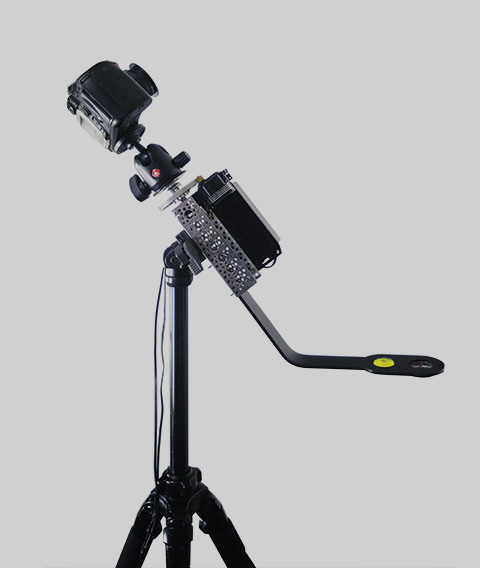Copernican Camera Version 2
13th July, 2016
This is how the Copernican Camera looks in its most recent version. There’s a spirit level and a compass built in, so it can be lined up with the celestial pole. The angle of the bend is set to 51 degrees for London’s latitude.
The idea behind the project was to bring an non-geocentric perspective to an everyday context. It’s also about closing the gap between “knowing” the fact “the earth rotates” and actually building it into one’s understanding.
There’s this story about Ludwig Wittgenstein, originally told by Elizabeth Anscombe:
He once greeted me with the question ‘Why do people say that it was natural to think that the Sun went around the Earth rather than that the Earth turned on its axis?’ I replied ‘I suppose because it looked like the Sun went around the Earth.’ ‘Well’ he asked ‘what would it have looked like if it had looked as if the Earth turned on its axis?’
This project takes that question at face value and offers an answer. Anscombe explains that Wittgenstein was actually making a point about language and the unsupported assumptions behind a phrase like “looks as if”. There are a lot of things that might be going on there, including the physical sensations that an individual has previously experienced while moving. The Copernican Camera takes just one aspect, the fixed visual frame of reference, and fixes it to the sun or the stars rather than the earth.
I’m interested in whether it’s possible, in reality, to see the earth “as” rotating, in the same way that we talk about seeing an ambiguous drawing like the duck-rabbit “as” one thing or another, and what else might follow from that. Stewart Brand, with his campaign for a photo of the whole earth in the 1960s, and Carl Sagan, with his “Pale Blue Dot” in the 1990s, both had idealistic visions of what an image of the earth from an astronomical perspective could mean. Both offered more of a top-down god-like view than the image sequences that the Copernican Camera captures.
I do think that images of the earth from space probably have contributed to a shift in attitudes, particularly when it comes to environmentalism, but I don’t think it’s easy to integrate scientific knowledge into everyday experience. I might say that I “know” that the sun is 93 million miles away but I’m just reciting a number. I don’t know it in the sense that I know my house is about halfway down my street, and I’m not sure what it would mean if I did.
The first video produced with the Copernican Camera is here.



